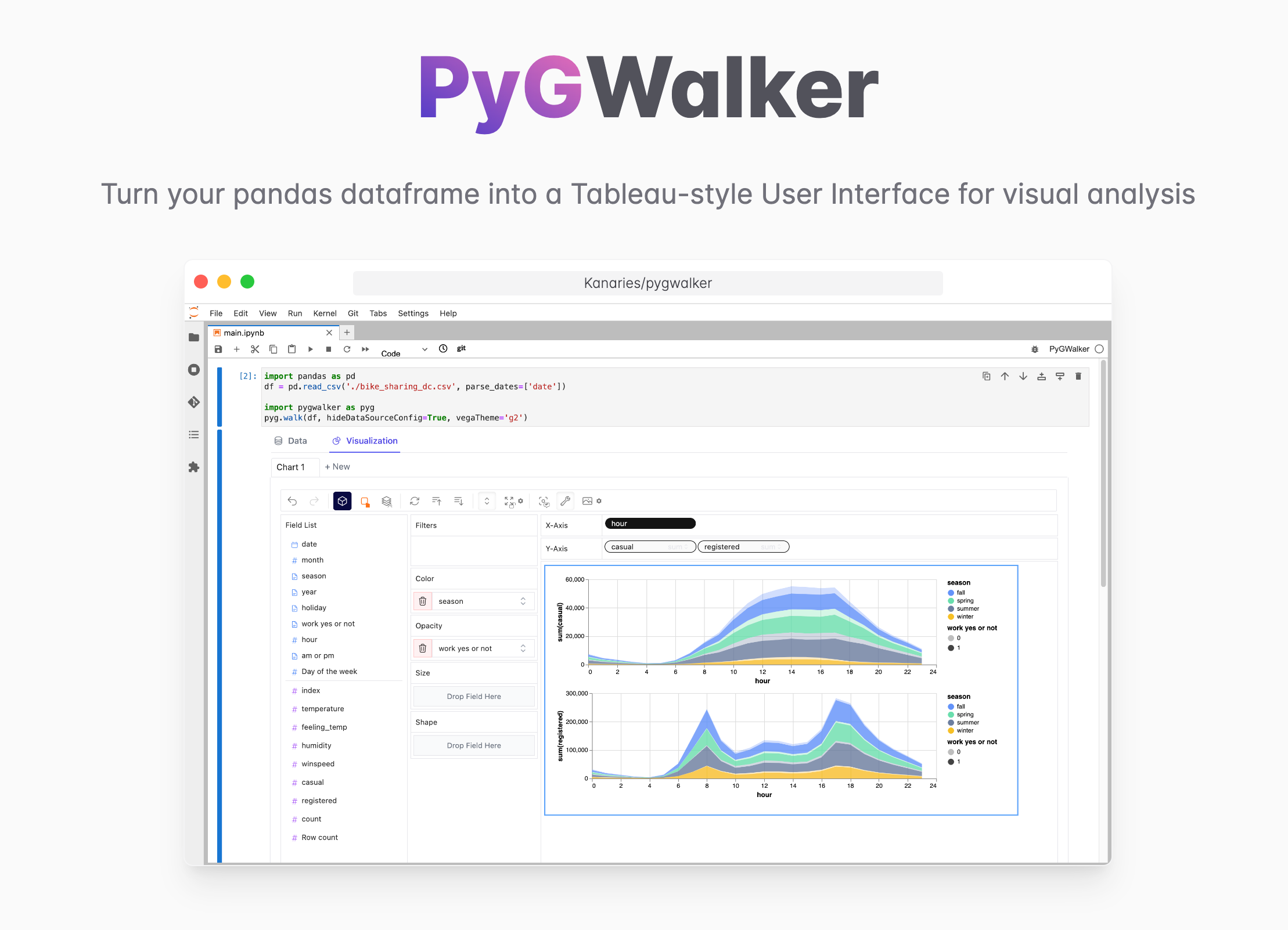Streamlit vs Dash: Which Framework is Right for You in 2025?
Updated on

If you're building data apps, AI-powered interactive dashboards, or rapid prototypes, chances are you’ve come across Streamlit and Plotly Dash. Both are popular open-source Python frameworks, but they serve slightly different audiences and use cases.
This updated 2025 guide compares Streamlit and Dash across features, performance, ecosystem, enterprise needs, and real-world scenarios—helping you choose the right tool for your next project.
🛠️ Want to add a Tableau-like UI to your Streamlit app?
PyGWalker (opens in a new tab) embeds a no-code visual analytics interface directly inside Streamlit.
Understanding Streamlit and Dash
⭐ What is Streamlit?
Streamlit is a lightweight Python framework that turns scripts into shareable apps—fast.
It focuses on developer experience, simple syntax, and zero front-end work.
Key reasons people choose Streamlit:
- Extremely fast to build and iterate
- Minimal boilerplate
- Ideal for data exploration, prototypes, internal tools
- Strong support for AI/LLM-based apps (2024–2025 updates)
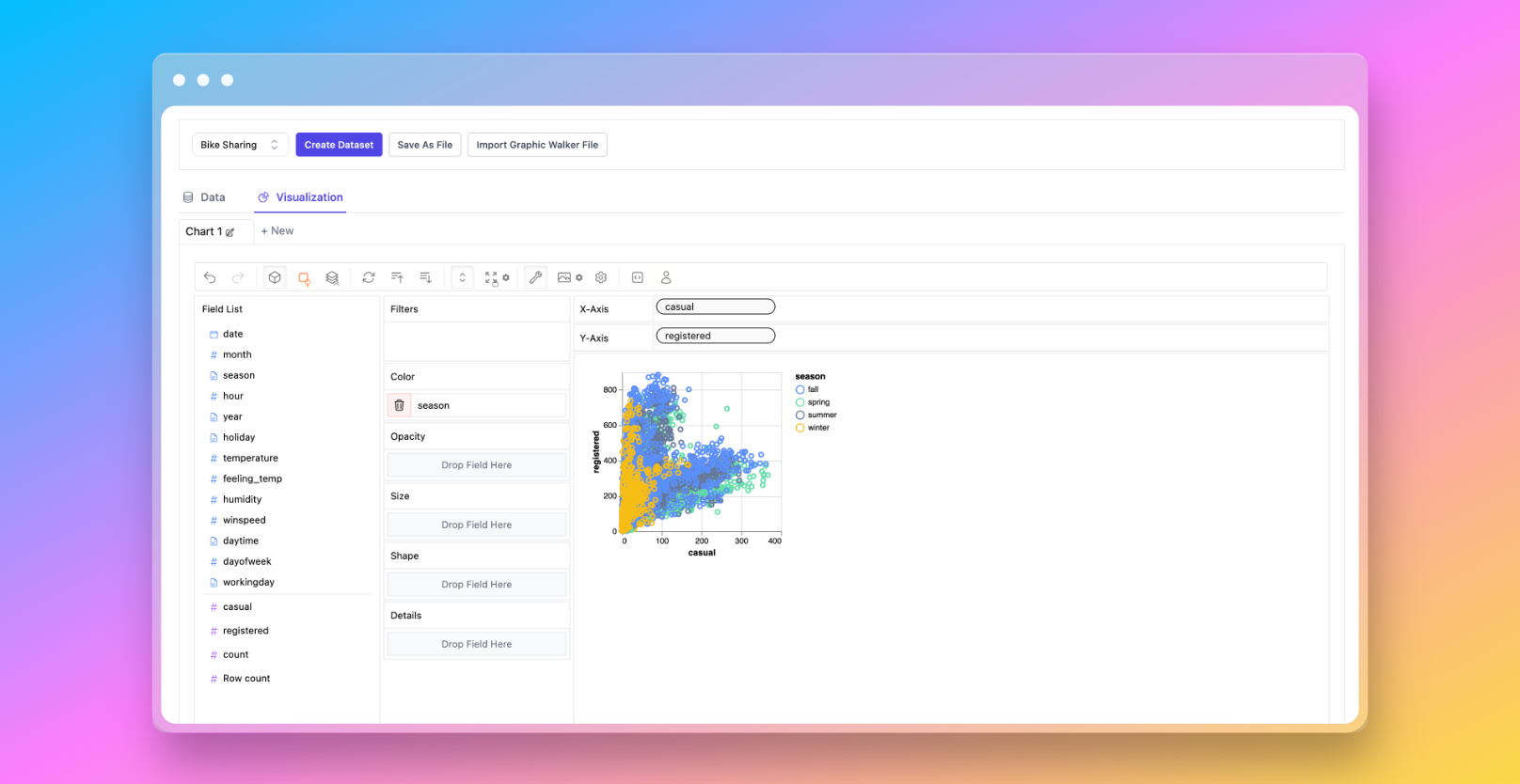
Want to recreate the visualization app above? Follow our step-by-step guide here.
⭐ What is Dash?
Plotly Dash is a more traditional web-app development framework built on:
- Flask (backend)
- React.js (frontend)
- Plotly.js (charts)
Dash is designed for:
- Enterprise-grade dashboards
- Highly customizable layouts
- Complex interactions via callbacks
- Embedded analytics in products
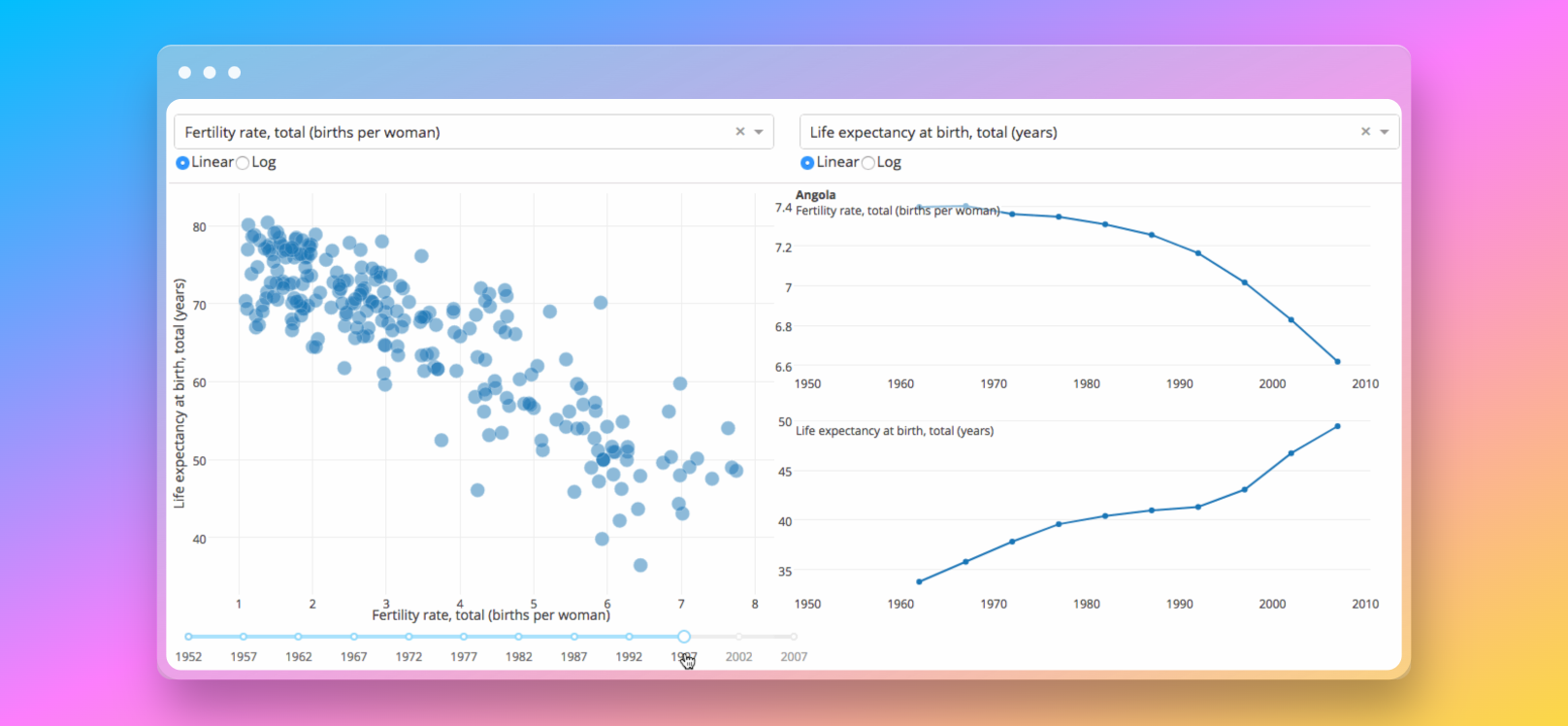
Streamlit vs Dash: A Detailed Comparison
Below is an updated, more realistic comparison table that reflects the current state of both tools:
| Category | **Streamlit ** | **Dash ** |
|---|---|---|
| Learning Curve | Very Easy | Moderate–High |
| UX for Developers | Pythonic & simple | More structure, more boilerplate |
| Performance | Great for small/medium apps | Better for large, complex apps |
| Component Ecosystem | Growing fast | Very mature (Plotly ecosystem) |
| Custom Layout | Limited (but improving) | Full control (CSS/HTML/React) |
| Callback Logic | Simple, linear execution | Advanced UI logic via callbacks |
| Deployment | Streamlit Community Cloud, local, Docker | Dash Enterprise, Kubernetes, self-hosted |
| Best For | Prototypes, AI apps, internal tools | Enterprise dashboards, embedded analytics |
Streamlit vs Dash: Feature Comparison
Streamlit — Focus on Simplicity
Streamlit excels when you want minimal friction:
- Built-in widgets: sliders, selectors, sidebars
- Hot-reloading for ultra-fast iteration
- Multipage apps (added recently)
- Native chat elements for LLM applications
- “App = Python script” development style
Dash — Focus on Control
Dash is the better fit when you need complete control:
- Complex, multi-layered layouts
- Callback-driven application architecture
- Native Plotly.js power
- Fully customizable CSS + HTML + React.js components
- Production-ready enterprise tooling (Dash Enterprise)
Streamlit vs Dash: Rapid Prototyping
For prototyping, Streamlit is unmatched.
- One file = working app
- No callbacks or MVC structure needed
- Easy integration with ML models, embeddings, LLMs
- Popular among data scientists for quick internal demos
Dash is still quick, but:
- Requires structure
- More boilerplate
- Callbacks can get large as the app grows
Winner: Streamlit
Streamlit vs Dash: Enterprise & Production Use
This is where Dash shines.
Dash advantages:
- True MVC architecture
- Better long-term maintainability
- Rich deployment options (Dash Enterprise)
- Authentication, SSO, RBAC
- Advanced visualization components
Streamlit enterprise use cases are growing, but:
- Limited structure for large codebases
- Fewer out-of-the-box enterprise controls
- Deployment is simpler but not as flexible
Winner: Dash
Streamlit vs Dash: User & Developer Experience
Streamlit:
- Much friendlier for beginners
- Simple mental model
- No web dev knowledge needed
- Great documentation
Dash:
- More concepts to learn
- Callbacks require planning
- But better for developers familiar with web frameworks
Winner: Streamlit for UX; Dash for engineering teams
Streamlit vs Dash: Structure & Adaptability
Dash uses:
- MVC architecture
- Clear separation of layout, callbacks, logic
- Easier to scale to 100+ components
Streamlit uses:
- Script-based execution
- Great flexibility
- But can become messy without discipline
Building a Simple App in Both Frameworks
⭐ Streamlit Code Example
import streamlit as st
import plotly.graph_objects as go
fig = go.Figure(data=go.Scatter(x=[1,2,3,4], y=[10,15,7,10]))
st.plotly_chart(fig)Run with:
streamlit run app.py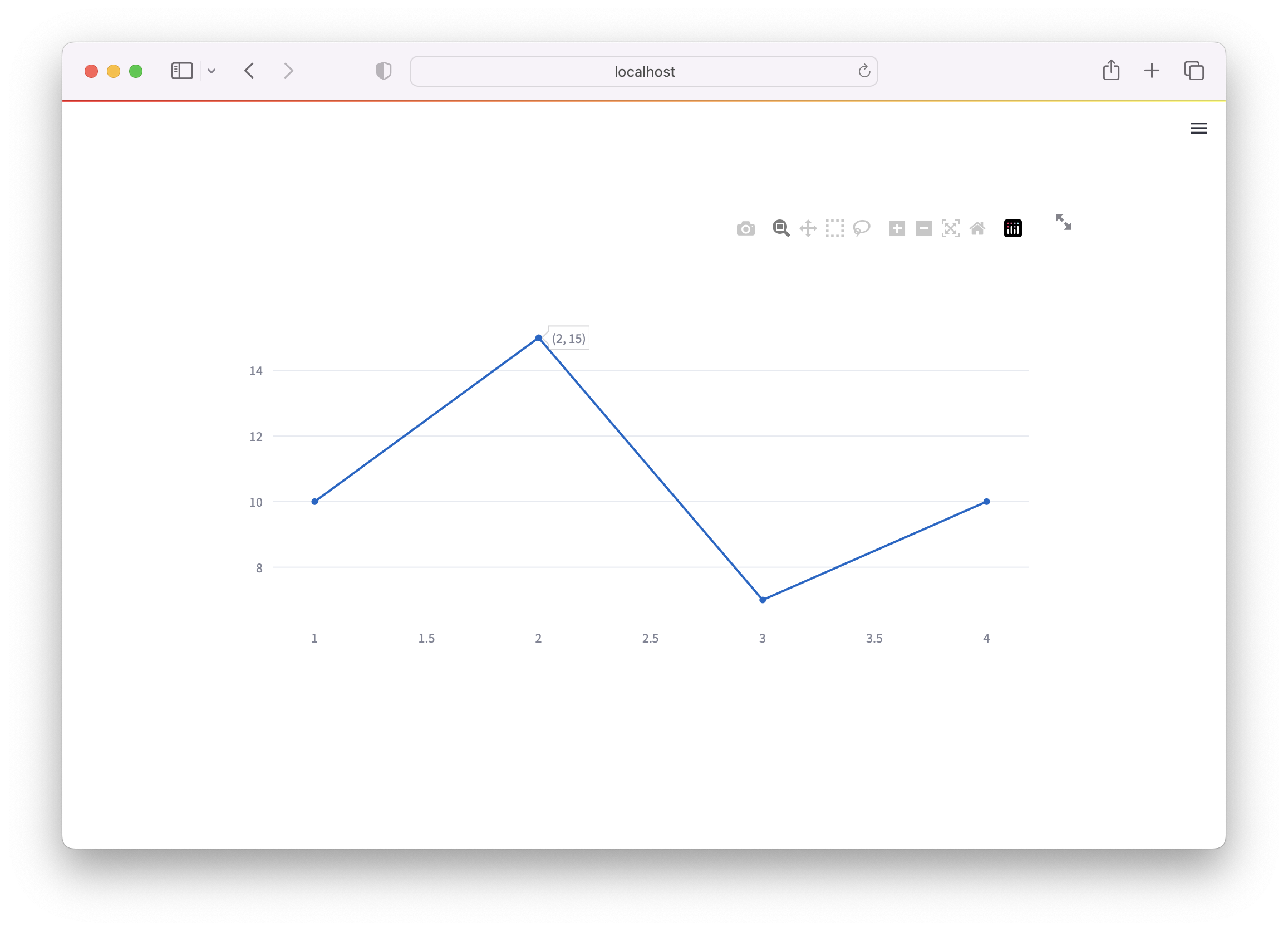
⭐ Dash Code Example (Updated for Dash 2.x Syntax)
import dash
from dash import html, dcc
import plotly.graph_objects as go
fig = go.Figure(data=go.Scatter(x=[1,2,3,4], y=[10,15,7,10]))
app = dash.Dash(__name__)
app.layout = html.Div([dcc.Graph(figure=fig)])
if __name__ == "__main__":
app.run_server(debug=True)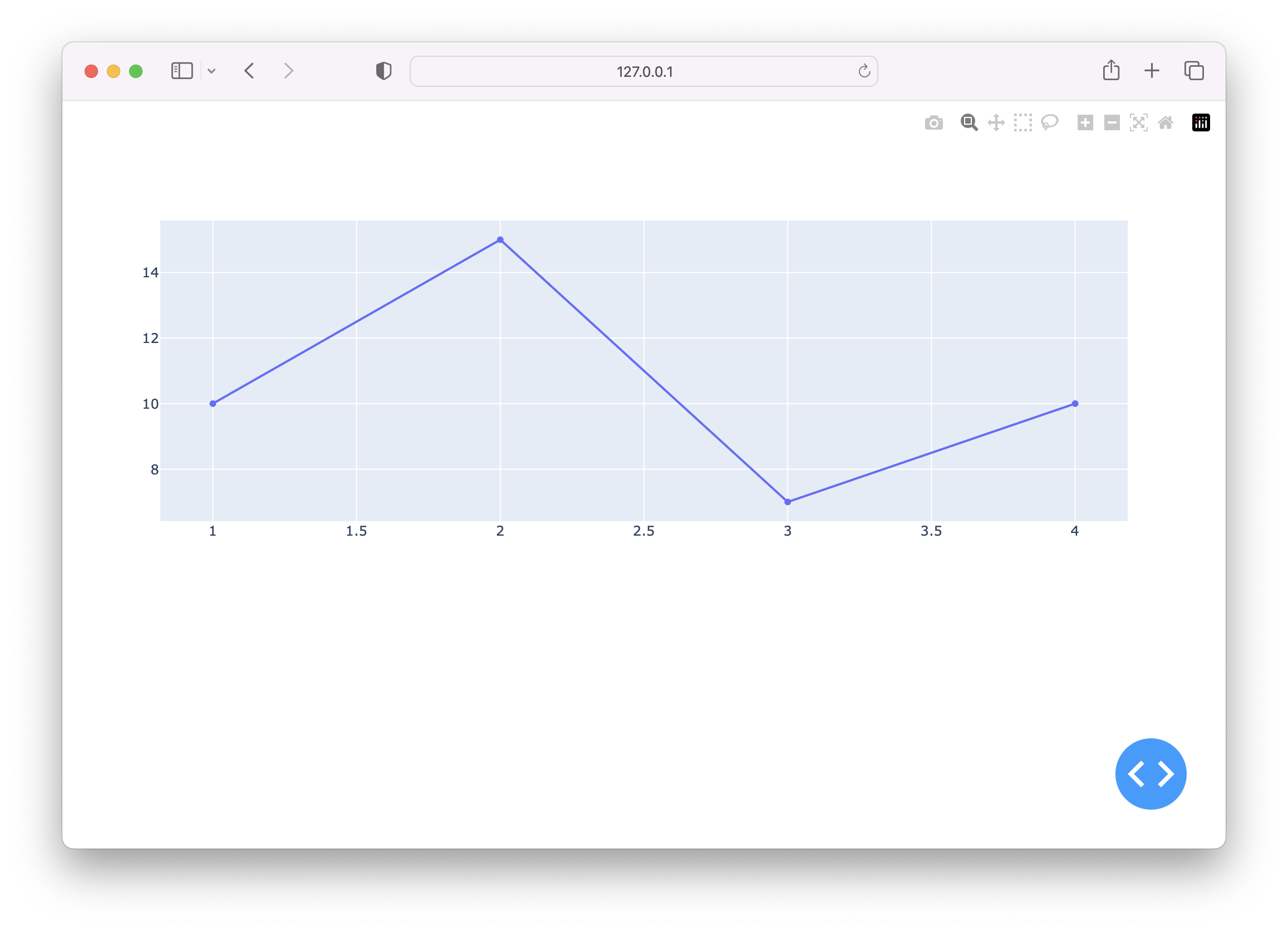
Comparing the Results
Streamlit:
- Less code
- Extremely intuitive
- Perfect for notebooks → app flow
Dash:
- More boilerplate
- But very powerful for large scale dashboards
- Better control over UI and performance
Conclusion: Should You Use Streamlit or Dash?
Use Streamlit if you want:
- Fast prototyping
- AI/LLM-powered apps
- Lightweight internal tools
- Simple dashboards
- Minimal code and maximum speed
Use Dash if you need:
- Enterprise-grade dashboards
- Highly interactive, deeply customized UI
- Complex callback logic
- Production apps with maintainable architecture
Either can produce excellent results—the right choice depends on your project’s depth, complexity, and long-term needs.
FAQs
-
Which is better for rapid prototyping, Streamlit or Dash? Streamlit is faster for prototyping due to its simple, script-based approach.
-
Which is better for enterprise applications? Dash offers more structure and production-ready features suitable for enterprise-scale apps.
-
Which has the larger community? Dash's community has been around longer, but Streamlit’s is growing rapidly.
